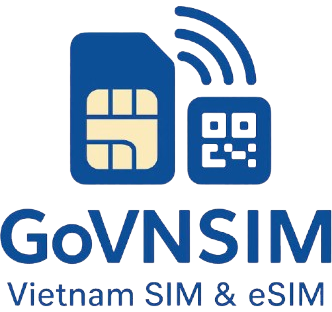No products in the cart.
Contract vs Prepaid Internet Device Vietnam 2025 — A Traveler’s Honest Guide
Prepaid internet device vietnam — Before my first trip to Vietnam, I wasn’t sure whether to rent a Pocket WiFi with deposit and return rules or just buy a prepaid eSIM. This guide shares what I (and other travelers) actually experienced: deposits, return policies, real costs, and how prepaid eSIMs compare with contract-style rentals.
📑 Why This Question Comes Up
Almost every visitor asks about internet in Vietnam. At airports you’ll see kiosks advertising “WiFi Egg” rentals, often with signs saying “Unlimited.” At the same time, prepaid eSIMs are just a QR code away. Both options have appeal, but the experience can feel very different depending on your trip length, group size, and how much hassle you’re willing to deal with.
📖 What Do We Mean by Contract vs Prepaid?
- Pocket WiFi (Contract-like): Feels like signing a short contract — you show your passport, leave a deposit, agree to return by a deadline, and risk late fees if delayed.
- Prepaid Internet Device / eSIM: One-time upfront payment, QR code delivered by email. No deposit, no return. The plan simply stops when validity ends.
💸 Cost Comparison & TCO — prepaid internet device vietnam
Here’s a realistic breakdown I found when comparing airport kiosks, city rentals, and prepaid eSIM plans in 2025:
| Scenario | Pocket WiFi (Contract) | Prepaid eSIM (Reference) | Notes |
|---|---|---|---|
| Daily fee | 120,000–180,000₫ / day (≈ US$5–7) | — | Airport desks often charge more; city shops slightly lower but add time cost. |
| Deposit (hold) | 2,000,000–3,000,000₫ (≈ US$80–120) | None | Held on card; risk of extra days if counter closes or flights delay. |
| Late return fee | 50,000–100,000₫ per day | None | Check cut-off hours; some desks close at night. |
| Lost / repair fee | US$100–160 | None | Applies to router, battery, or cable loss/damage. |
| Total cost of ownership — 7 days | ≈ 840,000–1,260,000₫ (US$35–49) + deposit hold | US$8.50–14.50 (10–20-day plans; VN number available) | Prepaid eSIM is typically cheaper for short trips. |
| Total cost of ownership — 10 days | ≈ 1,200,000–1,800,000₫ (US$49–74) + deposit hold | US$12.50–18.50 (15–30-day plans) | Routers are commonly ≥30% above eSIM totals. |
| Total cost of ownership — 30 days | ≈ 3,600,000–5,400,000₫ (US$147–221) + deposit hold | US$18.50 (30 days • 6GB/day) / US$14.90–19.90 (Viettel data-only) | Large gap; eSIM is far more economical and hassle-free. |
Typical ranges. Airport counters can be ~40% pricier than pre-arranged options; many city rentals price ~30% higher than competitive eSIM totals. Deposit is a hold (not a spend) but adds risk and hassle.
⚖️ Pros & Cons in Real Life
Pocket WiFi (Contract-style)
- ✅ Share one device among 3–5 friends.
- ✅ Works with older phones that don’t support eSIM.
- ❌ Requires deposit and ID copy.
- ❌ Return deadlines can clash with late/early flights.
- ❌ Lost device = significant penalty.
Prepaid eSIM
- ✅ Instant QR delivery by email, no returns.
- ✅ Transparent cost upfront, no hidden extras.
- ✅ Strong coverage on Viettel, MobiFone, VinaPhone.
- ✅ Works as hotspot for 1–3 devices.
- ❌ Not supported on some older phones.
- ❌ Groups of 5+ may still prefer a router.
🧭 Real Traveler Experiences
Linda in Hanoi
Linda from Taiwan rented a Pocket WiFi at Noi Bai Airport for her 9-day trip. The rental cost ~$45 plus a $100 deposit. On her final day, her flight was delayed and the counter closed; she had to return the router the next morning and paid an extra day. Her friend activated a prepaid eSIM ($12.50 for 10 days) in two minutes and avoided the hassle entirely.
Group Weekend in Ha Long
A group of four Australians rented one router for their Ha Long Bay weekend. It worked well on the bus, but when they split into two boats for kayaking, half lost internet. The next day, they switched to prepaid eSIMs so each could navigate and share photos independently.
Freelancer in Da Nang
Paul, a British freelancer, stayed in Da Nang for a month. A router would have cost him ~$160 plus deposit. Instead, he used a prepaid eSIM ($18.50 for 30 days, 6GB/day) and tethered his laptop daily. He left Da Nang at 5 a.m. without worrying about returning any device.
💼 Business Traveler Needs
For work trips, OTP is often the deciding factor. Banking apps, Grab, and Zalo Pay require a Vietnamese number. Prepaid eSIMs with phone numbers support this seamlessly, while Pocket WiFi devices are data-only.
🧰 Backup Internet Strategy
Some nomads carry both: a prepaid eSIM for daily use and a rented router for team workdays. For most tourists, prepaid alone is sufficient.
🗺️ Coverage in Cities & Mountains
Whether using a router or eSIM, coverage depends on the carrier. In rural Ha Giang or Sapa, Viettel is most consistent. Along the coast (Da Nang, Nha Trang, Phu Quoc), MobiFone and VinaPhone perform well. Prepaid eSIMs let you pick networks without return stress.
🔗 Related Reading
Want the full comparison of Pocket WiFi vs eSIM in Vietnam? See our Decision Hub guide.
✅ Final Thoughts — Contract vs Prepaid Internet Device Vietnam
- Pocket WiFi: Works if 3–5 people travel together constantly and don’t mind deposits and strict returns.
- Prepaid eSIM: Simpler, cheaper, and safer for most travelers — especially solo visitors, long stays, and business trips needing OTP.
📣 Plan Your Connectivity
Looking for prepaid options? Explore our Vietnam eSIM Ultimate Plan 2025.
✅ Order online today, receive your QR instantly, and connect the moment you land.
Part of Heera Travel Group – Explore more Vietnam tours at HeeraTravel.com
